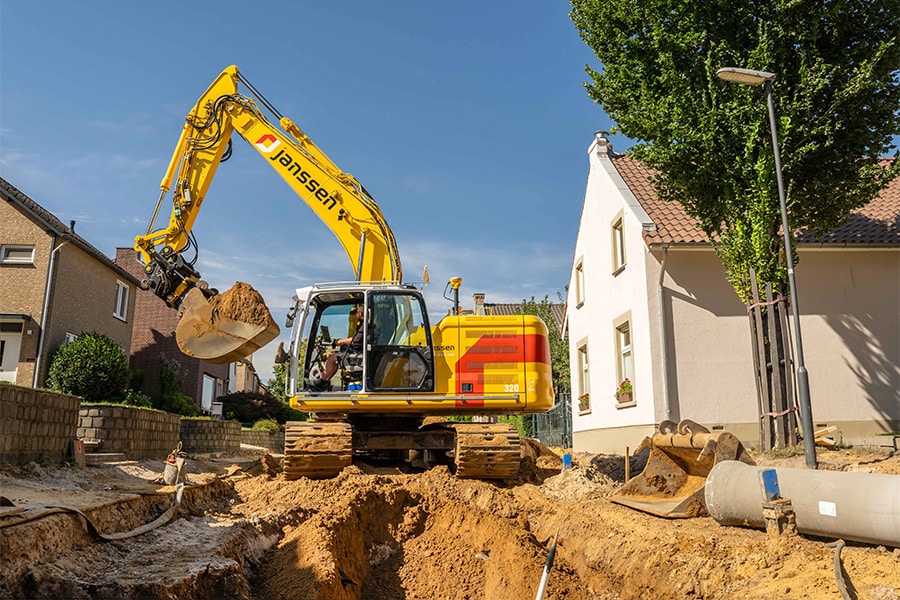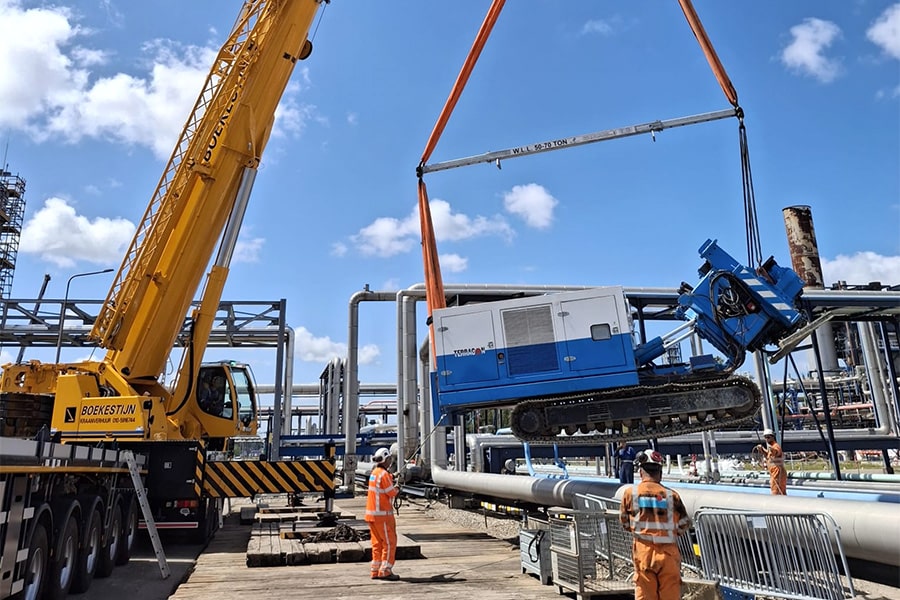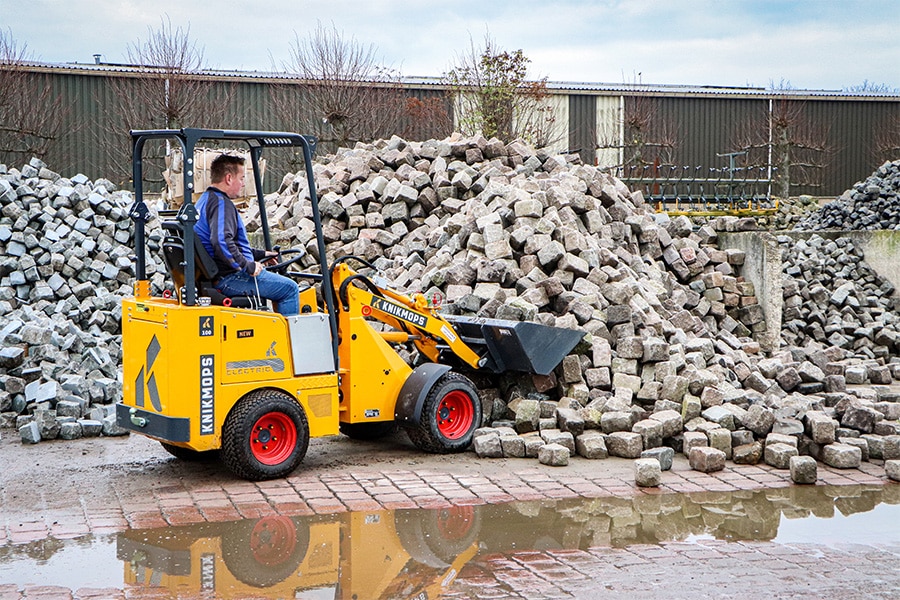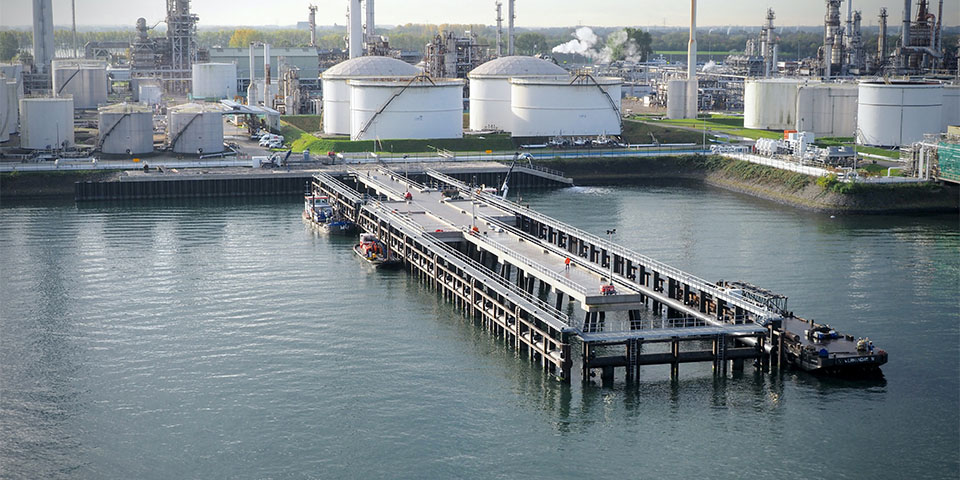
BIM: Digital integration in the port of Rotterdam
The role of engineering firms and application at an oil terminal in Europoort
Economic growth, digitization and increased pressure from clients are demanding more and more from engineering firms within hydraulic engineering. To anticipate market developments and stay ahead of the competition, offering an efficient and robust design process is crucial. Cross-project communication is of great importance here in order to provide an optimal picture of aspects such as costs, planning and management. Europe's largest and most modern port, the Port of Rotterdam, is developing a central database for the entire port.
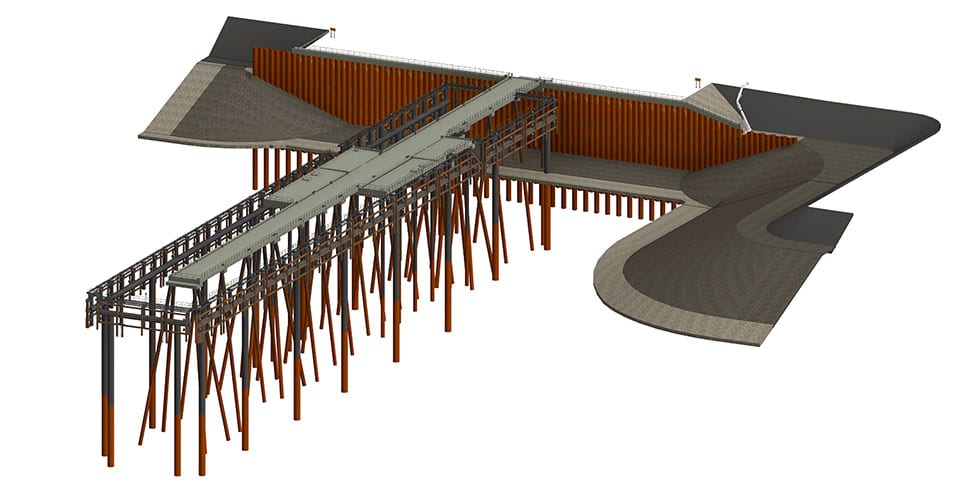
Visualization 3D model with a prominent role for scaffolding and combination wall.
Building Information Modeling (BIM) is a godsend. This technology relies on managing and controlling data in a single model during all design stages, the construction process and the entire life cycle of a structure. Being able to see correct, up-to-date data at a specific time and location at all times ultimately results in improved project completion, and therefore lower costs. At the front end of a BIM-oriented model is a 3D model, set up in a design program such as Revit. All available information is linked to this, so that the influence of this information (and of implemented changes) is immediately visible.
Oil terminal in the Europoort
For BIM integration in the port of Rotterdam, Lievense I WSP, together with De Klerk Werkendam, conducted a pilot for the hbr. The project encompasses the realization of a quay construction and an inland shipping jetty with associated brake works for the transshipment of petrochemical products. Consultancy and engineering firm Lievense | WSP provided the bid, definition and execution design. In addition, Lievense I WSP set up the 3d model, prepared required info of the structure, collected relevant information and linked it to the corresponding model objects. The scale at which the Port of Rotterdam applies standardization of objects is unique in the Netherlands. In total, more than four thousand objects are involved, including bollards, foundation piles and anchor rods to which available information has been linked.
The model is based on the BIM management database of the Port of Rotterdam Authority, set up by Witteveen+Bos to realize a structured system with standardized information transfer for the entire port. Lievense | WSP set up a 3D model using an object tree in parallel with the necessary structural calculations. Geometric information from the model was then stored in spreadsheets per object type. Non-geometric data, from the contractor and client, were added to the objects and then all information was assigned to their counterparts in Revit. Finally, the 3D model was exported to the desired file format to achieve integration with the entire BIM database for the Port of Rotterdam and generate visualization images.
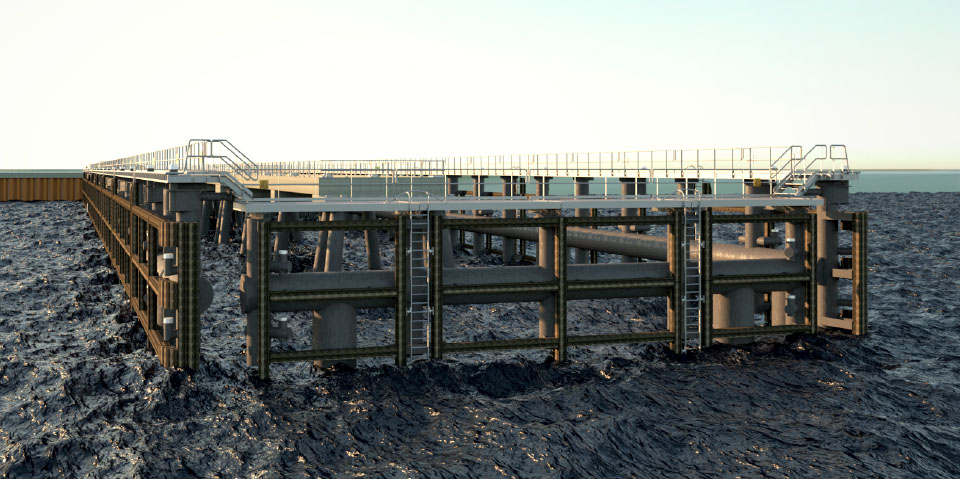
The project involves the realization of a quay structure and an inland waterway jetty for the transshipment of petrochemical products with associated breakwaters.
Digital and integral collaboration
The central way of storing information for the entire port results in a dynamic and orderly project collaboration between involved parties in which the chance of making mistakes decreases. The expansion into a so-called 'Digital Twin' (virtual representation) of the port and the link with external factors opens many doors in the long run. Think of identifying weak links in the port using storm simulations or drawing up a central management and maintenance plan.
To achieve this, continuous, close cooperation between stakeholders and optimal integration of all project phases is essential. It also requires personnel with advanced knowledge of BIM (management) to meet the high model requirements, as well as a powerful server and comprehensive administration system. Standardization of information transfer and integration of BIM into current working methods, on the other hand, represent such a big step toward a digital economy that these hurdles can hardly halt the development trend already underway.
